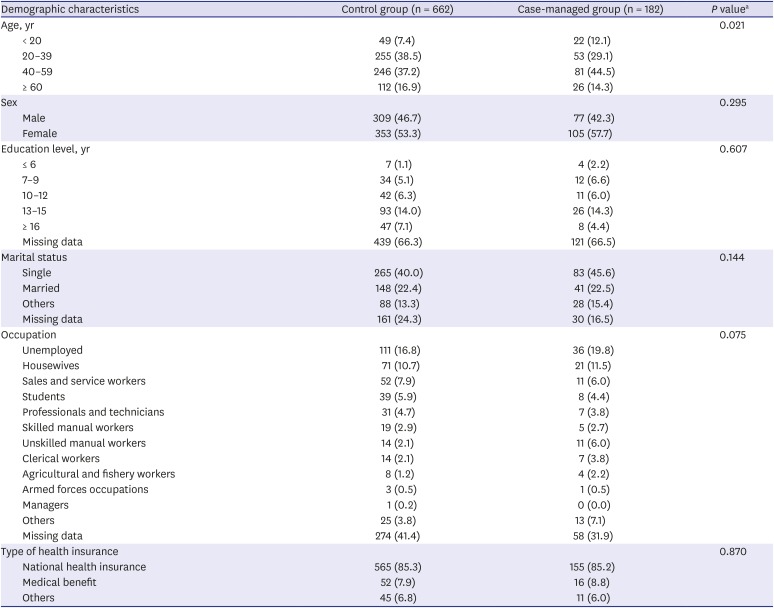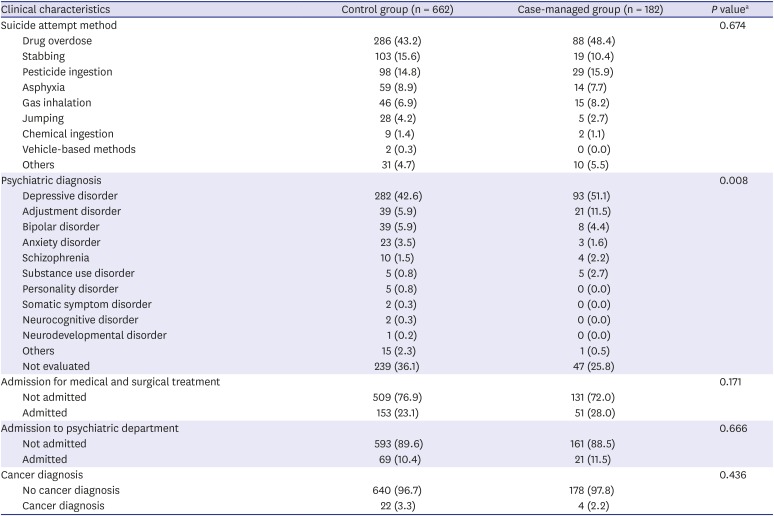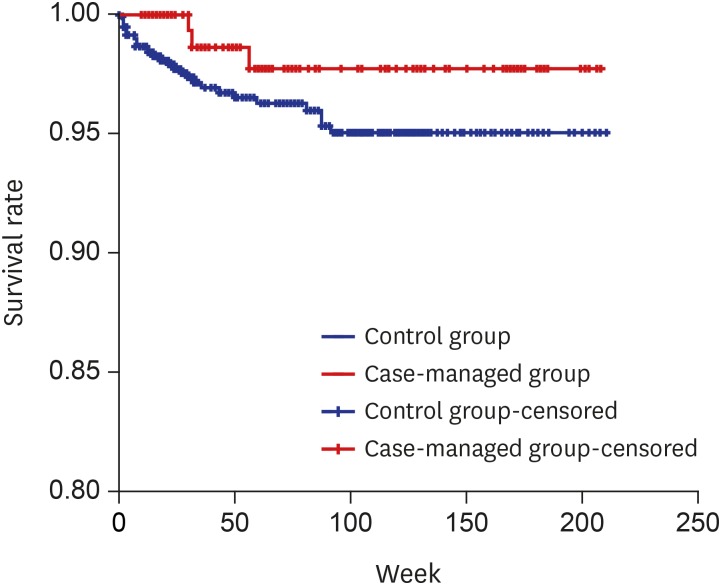1. Rudd MD, Goulding JM, Carlisle CJ. Stigma and suicide warning signs. Arch Suicide Res. 2013; 17(3):313–318. PMID:
23889579.
2. World Health Organization. Preventing Suicide: a Global Imperative. Geneva: World Health Organization;2014.
3. Curtin SC, Warner M, Hedegaard H. Increase in suicide in the United States, 1999-2014. NCHS Data Brief. 2016; (241):1–8.
4. Olfson M, Blanco C, Wall M, Liu SM, Saha TD, Pickering RP, et al. National trends in suicide attempts among adults in the United States. JAMA Psychiatry. 2017; 74(11):1095–1103. PMID:
28903161.
6. Qin P, Agerbo E, Mortensen PB. Suicide risk in relation to socioeconomic, demographic, psychiatric, and familial factors: a national register-based study of all suicides in Denmark, 1981-1997. Am J Psychiatry. 2003; 160(4):765–772. PMID:
12668367.
7. Lu D, Fall K, Sparén P, Ye W, Adami HO, Valdimarsdóttir U, et al. Suicide and suicide attempt after a cancer diagnosis among young individuals. Ann Oncol. 2013; 24(12):3112–3117. PMID:
24169626.
8. Mendez-Bustos P, de Leon-Martinez V, Miret M, Baca-Garcia E, Lopez-Castroman J. Suicide reattempters: a systematic review. Harv Rev Psychiatry. 2013; 21(6):281–295. PMID:
24201820.
9. Osváth P, Kelemen G, Erdös MB, Vörös V, Fekete S. The main factors of repetition: review of some results of the Pecs Center in the WHO/EURO multicentre study on suicidal behaviour. Crisis. 2003; 24(4):151–154. PMID:
15509139.
10. Bertolote JM. Suicide prevention: at what level does it work? World Psychiatry. 2004; 3(3):147–151. PMID:
16633479.
11. Suominen K, Isometsä E, Suokas J, Haukka J, Achte K, Lönnqvist J. Completed suicide after a suicide attempt: a 37-year follow-up study. Am J Psychiatry. 2004; 161(3):562–563. PMID:
14992984.
12. Hawton K, Bergen H, Cooper J, Turnbull P, Waters K, Ness J, et al. Suicide following self-harm: findings from the multicentre study of self-harm in England, 2000–2012. J Affect Disord. 2015; 175:147–151. PMID:
25617686.
13. Kuo CJ, Gunnell D, Chen CC, Yip PS, Chen YY. Suicide and non-suicide mortality after self-harm in Taipei City, Taiwan. Br J Psychiatry. 2012; 200(5):405–411. PMID:
22403088.
14. Owens D, Horrocks J, House A. Fatal and non-fatal repetition of self-harm. Systematic review. Br J Psychiatry. 2002; 181:193–199. PMID:
12204922.
15. Carter GL, Clover K, Whyte IM, Dawson AH, D'Este C. Postcards from the EDge project: randomised controlled trial of an intervention using postcards to reduce repetition of hospital treated deliberate self poisoning. BMJ. 2005; 331(7520):805. PMID:
16183654.
16. Beautrais AL. Suicides and serious suicide attempts: two populations or one? Psychol Med. 2001; 31(5):837–845. PMID:
11459381.
17. Institute of Medicine Committee on Prevention of Mental Disorders. Reducing Risks for Mental Disorders: Frontiers for Preventive Intervention Research. Washington, D.C.: National Academies Press;1994.
18. Ivezić SS, Muzinić L, Filipac V. Case management - a pillar of community psychiatry. Psychiatr Danub. 2010; 22(1):28–33. PMID:
20305587.
19. Mann JJ, Apter A, Bertolote J, Beautrais A, Currier D, Haas A, et al. Suicide prevention strategies: a systematic review. JAMA. 2005; 294(16):2064–2074. PMID:
16249421.
20. Milner AJ, Carter G, Pirkis J, Robinson J, Spittal MJ. Letters, green cards, telephone calls and postcards: systematic and meta-analytic review of brief contact interventions for reducing self-harm, suicide attempts and suicide. Br J Psychiatry. 2015; 206(3):184–190. PMID:
25733570.
21. Lizardi D, Stanley B. Treatment engagement: a neglected aspect in the psychiatric care of suicidal patients. Psychiatr Serv. 2010; 61(12):1183–1191. PMID:
21123401.
22. Asarnow JR, Baraff LJ, Berk M, Grob CS, Devich-Navarro M, Suddath R, et al. An emergency department intervention for linking pediatric suicidal patients to follow-up mental health treatment. Psychiatr Serv. 2011; 62(11):1303–1309. PMID:
22211209.
23. De Leo D, Heller T. Intensive case management in suicide attempters following discharge from psychiatric care. Aust J Prim Health. 2007; 13(3):49–58.
24. Chen WJ, Chen CC, Ho CK, Lee MB, Lin GG, Chou FH. Community-based case management for the prevention of suicide reattempts in Kaohsiung, Taiwan. Community Ment Health J. 2012; 48(6):786–791. PMID:
22302211.
25. Vaiva G, Walter M, Al Arab AS, Courtet P, Bellivier F, Demarty AL, et al. ALGOS: the development of a randomized controlled trial testing a case management algorithm designed to reduce suicide risk among suicide attempters. BMC Psychiatry. 2011; 11:1. PMID:
21194496.
26. Hvid M, Wang AG. Preventing repetition of attempted suicide--I. Feasibility (acceptability, adherence, and effectiveness) of a Baerum-model like aftercare. Nord J Psychiatry. 2009; 63(2):148–153. PMID:
19016074.
27. Johannessen HA, Dieserud G, De Leo D, Claussen B, Zahl PH. Chain of care for patients who have attempted suicide: a follow-up study from Baerum, Norway. BMC Public Health. 2011; 11:81. PMID:
21294876.
28. Cebrià AI, Parra I, Pàmias M, Escayola A, García-Parés G, Puntí J, et al. Effectiveness of a telephone management programme for patients discharged from an emergency department after a suicide attempt: controlled study in a Spanish population. J Affect Disord. 2013; 147(1-3):269–276. PMID:
23219058.
29. Motto JA, Bostrom AG. A randomized controlled trial of postcrisis suicide prevention. Psychiatr Serv. 2001; 52(6):828–833. PMID:
11376235.
30. Goldney RD. Suicide prevention is possible: a review of recent studies. Arch Suicide Res. 1998; 4(4):329–339.
31. Tidemalm D, Langstrom N, Lichtenstein P, Runeson B. Risk of suicide after suicide attempt according to coexisting psychiatric disorder: Swedish cohort study with long term follow-up. BMJ. 2008; 337:a2205. PMID:
19018040.
32. Fleischmann A, Bertolote JM, Wasserman D, De Leo D, Bolhari J, Botega NJ, et al. Effectiveness of brief intervention and contact for suicide attempters: a randomized controlled trial in five countries. Bull World Health Organ. 2008; 86(9):703–709. PMID:
18797646.
33. Lee SU, Oh IH, Jeon HJ, Roh S. Suicide rates across income levels: retrospective cohort data on 1 million participants collected between 2003 and 2013 in South Korea. J Epidemiol. 2017; 27(6):258–264. PMID:
28314637.
34. Jeon HJ, Lee JY, Lee YM, Hong JP, Won SH, Cho SJ, et al. Lifetime prevalence and correlates of suicidal ideation, plan, and single and multiple attempts in a Korean nationwide study. J Nerv Ment Dis. 2010; 198(9):643–646. PMID:
20823725.
35. Ra CK, Lee H. Employment transitions and suicide ideation among Echo generation. Health Policy Manag. 2013; 23(4):369–375.
36. Anguiano L, Mayer DK, Piven ML, Rosenstein D. A literature review of suicide in cancer patients. Cancer Nurs. 2012; 35(4):E14–E26. PMID:
21946906.
37. Corcoran P, Nagar A. Suicide and marital status in Northern Ireland. Soc Psychiatry Psychiatr Epidemiol. 2010; 45(8):795–800. PMID:
19763365.
38. Sawa M, Koishikawa H, Osaki Y. Risk factors of a suicide reattempt by seasonality and the method of a previous suicide attempt: a cohort study in a Japanese primary care hospital. Suicide Life Threat Behav. 2017; 47(6):688–695. PMID:
28030756.








 PDF
PDF Citation
Citation Print
Print




 XML Download
XML Download